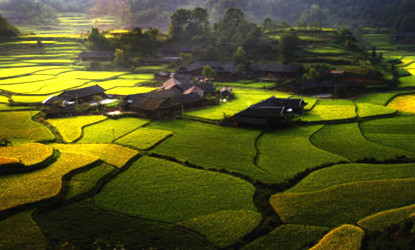Skype: neodalle-travel
Tel: +86 135 7447 2266
E-mail: sales@zhangjiajieholiday.com

 Surrounded by mountains and hills in the east, west and south, Hunan comprises of hills and basins in the center and plains in the north. The center and northern parts are a somewhat low and a U-shaped basin, open in the north and with Dongting Lake as its center.
Surrounded by mountains and hills in the east, west and south, Hunan comprises of hills and basins in the center and plains in the north. The center and northern parts are a somewhat low and a U-shaped basin, open in the north and with Dongting Lake as its center.Population in Hunan
Hunan is one of the most populous provinces in China. Covering 2.2 percent of China's territory area, its population amounts for about 5 percent of the country's total, ranking No.7 in China (2013). The average population density is 318 people per square kilometer.
By the end of 2016, the registered permanent resident population of the province had reached 68.22 million, among which 35.176 million were males, and 33.044 million were females. The registered households numbered 20.23 million, involving a population of 66.55 million. The population in urban areas reached 35.986 million, realizing an urbanization rate of 52.75%. The birth rate of the registered permanent population was 13.58‰ while the death rate of the same population was 6.89‰. The natural growth rate of the registered population was 6.72‰.
History of Hunan
In the Spring and Autumn Period and Warring States Period, it belonged to the Chu Kingdom, but in the Qin Dynasty it was divided into two shires that were subordinate to Jingzhou in the Han Dynasty afterward; in the Tang Dynasty they became two Daos with the name Hu'nan appearing for the first time; in the Song Dynasty the title Dao was changed to Lu; in the Yuan and Ming Dynasties, the Administrative Province-Huguang Xingsheng had been set up; finally the emperor of the Qing Dynasty made it Hu'nan Province.
Hunan Tourism
Hu'nan Province has a long history and a beautiful landscape, and is particularly rich in tourism resources. As one of the cradles of Chinese revolution. Abundant in natural resources and products, Hu'nan Province is acclaimed as “land of fish and rice”. Furthermore, Hu'nan Embroidery is one of “the Four Famous Embroideries” in China, and its cuisine is one of “the Eight Major Chinese Cuisines”.
 Ask Questions ?
Ask Questions ?